
Viruses such as the Zika virus (contracted by mosquitoes) and the Powassan (POW) virus (contracted by ticks) have continued to make headlines this year with new developments. However, there’s another threat that is making recent headlines this summer. A threat from the past…the bubonic plague!
Bubonic Plague | Being In The Know May Help You
As of mid-August 2017, it has been confirmed that the bacteria (yersinia pestis) that causes the bubonic plague has been found in fleas in two Arizona counties that are 120 miles apart from each other – Navajo and Coconino counties. How did this spread to Arizona? Back in June 2017, three people needed hospital treatment after contracting the plague 400 miles east in Santa Fe County, New Mexico. There were four confirmed cases in New Mexico back in 2016, none of which were fatal. So, it is easily assumed that this is one possible way that the infected fleas ended up in Arizona, which is a border state to New Mexico.
Bubonic plague! How is this possible? Many are not aware (including myself, until a few days ago) that the bubonic plague has never been completely eradicated since the pandemic that spread across Europe and Asia in the 14th century which claimed 200 million lives. Due to this fact, there are thousands of confirmed cases each year around the globe.
The Cycle – How The Plague Has Recently Spread

Back in the 14th century, black rats were the primary carriers of the bubonic plague. Today, other ground rodents such as ground squirrels and prairie dogs have become infected with the bubonic plague. The connection? All rodents can carry fleas. Furthermore, these are not the only animals that can be infected. A single bite from a flea carrying the plague causing bacteria yersinia pestis, can transmit the plague to other small wild animals such as rabbits, for example. Also, any predatory wild animals that commonly feed on these (infected) smaller wild animals, can, in turn, become infected as well. These fleas can also infect our beloved dogs and cats. Our canine and feline companions, if infected, can then infect us! If infected, the fleas of our pets can infect us by a single bite. We can also contract the plague by cat saliva coming in contact with our skin.
The symptoms of the bubonic plague in humans appear within 2-6 days after exposure and include the following:
- Fever
- Chills
- Headache
- Weakness
- Muscle pain
- Swollen lymph glands in the groin, armpits, and limbs
When caught early, the bubonic plague is 100% treatable with antibiotic treatment. It’s important to seek medical treatment as soon as possible if you suspect being infected! Left untreated, it can become septicaemic which means it can spread throughout the bloodstream. Also, left untreated, it can become pneumonic, which means it affects the lungs. This is when it can turn fatal very quickly!
Abc15.com reports on August 11, 2017:
“Officials are urging residents to reduce their exposure to the disease. Dogs are encouraged to be kept on leashes. Cats are highly susceptible to the plague; sicks cats, especially ones that are allowed to roam outside, should receive a proper diagnosis and treatment to reduce human exposure.
Authorities also say a sudden die-off of prairie dogs and rodents may indicate that the plague is present or has spread. Anyone who has noticed a sudden decrease in rodents or rabbits are encouraged to contact the Navajo County Health Department.”
Officials in Navajo County released the following tips for those who work, live or visit areas where the plague or where rodents are present:
- “Do not handle sick or dead animals.
- Prevent pets from roaming loose. Pets can pick up the infected fleas of wild animals, and then pass fleas on to their human owners. This is one of the common ways for humans to contract plague. Cats with plague can also pass the disease on to humans directly through respiratory droplets.
- De-flea pets routinely. Contact your veterinarian for specific recommendations.
- Avoid rodent burrows and fleas.
- Use insect repellents when visiting or working in areas where plague might be active or rodents might be present (campers, hikers, woodcutters, and hunters).
- Wear rubber gloves and other protection when cleaning and skinning wild animals.
- Do not camp next to rodent burrows and avoid sleeping directly on the ground.”
Fox News shows a video news on ticks testing positive in Arizona:
In closing, I would like to state (as I have in my previous articles) that I am not trying to induce panic of any kind. However, left untreated or ignored, the bubonic plague is fatal. I encourage all of you to do your own studies (beyond this article) in regards to more information and to stay current on weekly updates that may include your state. Centers for Disease Control and Prevention (CDC) is a great resource for the most current and accurate information.
What do you think about the Bubonic Plague threat? Please let us know in the comments section below.
Up Next: 5 Natural Remedies to Get Rid of Fleas In and Around Your Home
![]()
Follow us on Facebook, Instagram, Twitter, Pinterest, and Tumblr!
Check out these articles to have updated information on the Zika virus and the POW virus:
The POW Virus – What You Need To Know
Check these articles on other ways to protect yourself and your family from other (potentially) virus causing insects:
3 Homemade Mosquito Repellents
5 Natural Tick Repellents to Get Rid of Ticks NOW
from SurvivalLife https://survivallife.com/bubonic-plague-threat/























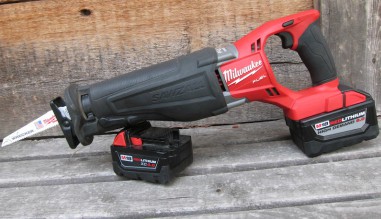
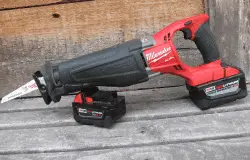 since. With it’s few moving parts, fast blade changes, variable speed, and a near unlimited number of blade options, the Sawzall is first and often only choice when speed and results are more important than precision and stealth.
since. With it’s few moving parts, fast blade changes, variable speed, and a near unlimited number of blade options, the Sawzall is first and often only choice when speed and results are more important than precision and stealth.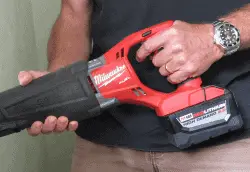 Sawzall near-corded performance. With 18 volts and 9 amp-hours of run time, the ability to swap blades and batteries will keep the
Sawzall near-corded performance. With 18 volts and 9 amp-hours of run time, the ability to swap blades and batteries will keep the 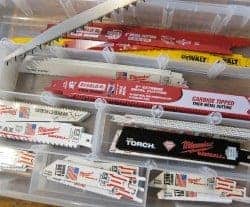 of the saw. For instance, a popular general purpose survival choice might be the six-inch 18-tooth metal cutter, or perhaps the nine-inch 12-tooth combination blade. But luckily, you can have both. And others. And more. By finding the cutting sweet-spot of blade type and blade speed, the ideal recipe for slicing up whatever you’ve got can be found quickly. Full speed is always an option, but it might just dull your blade faster and heat up your workspace.
of the saw. For instance, a popular general purpose survival choice might be the six-inch 18-tooth metal cutter, or perhaps the nine-inch 12-tooth combination blade. But luckily, you can have both. And others. And more. By finding the cutting sweet-spot of blade type and blade speed, the ideal recipe for slicing up whatever you’ve got can be found quickly. Full speed is always an option, but it might just dull your blade faster and heat up your workspace.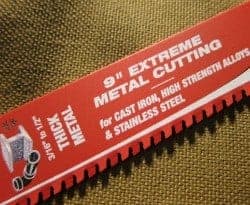 tipped thick-metal cutting blade. A few companies even make specific “rescue/demolition” blades in bright emergency yellow color and averaging 12 teeth per inch in lengths from six inches to 12 inches.
tipped thick-metal cutting blade. A few companies even make specific “rescue/demolition” blades in bright emergency yellow color and averaging 12 teeth per inch in lengths from six inches to 12 inches. idea because there is nothing subtle about the way the Sawzall cuts. It’s violent, aggressive, and permanent. Once the jackhammer-like action of the
idea because there is nothing subtle about the way the Sawzall cuts. It’s violent, aggressive, and permanent. Once the jackhammer-like action of the 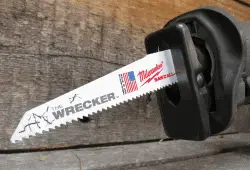 saw placement. The Sawzall can behave like a small chainsaw as well when using one of the pruning blade choices. The heavy tooth design is similar to bow saws and camp saws and cuts with the same speed and flying sawdust. Another area where the Sawzall excels is with large game butchering. If metal presents few problems for the Sawzall, then bone and gristle will do little but wet the blade and damen the noise.
saw placement. The Sawzall can behave like a small chainsaw as well when using one of the pruning blade choices. The heavy tooth design is similar to bow saws and camp saws and cuts with the same speed and flying sawdust. Another area where the Sawzall excels is with large game butchering. If metal presents few problems for the Sawzall, then bone and gristle will do little but wet the blade and damen the noise.
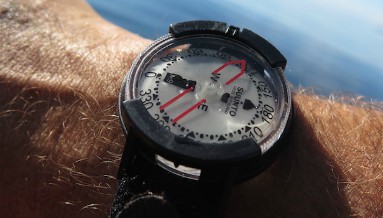
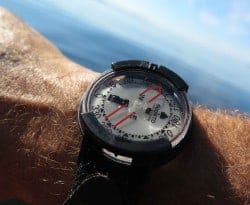 you. While usually no problem, a faulty compass can mislead you into a false sense of orientation. Unfortunately a
you. While usually no problem, a faulty compass can mislead you into a false sense of orientation. Unfortunately a 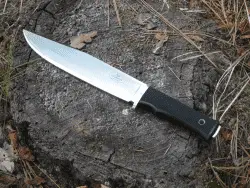 the knife is an essential component of any survival kit, cutting corners with your cutting steel is a bad idea from every angle. Like the compass, a knife can be deceiving. Even cheap blades can cut something. Where the cheap knife becomes dangerous is when the knife must perform under pressure. Quality directly affects steel strength, ability to hold an edge, and the obvious need to be resharpened. Cheap folding knives can snap in half, unlock when least expected, and fail in multiple mechanical ways. Cheap fixed blade knives can also snap in half, bend, chip, and dull quickly. And once dull, might not easily take a new edge. The deception with a cheap fixed blade is that until push really comes to shove, the true cheap nature of the blade may remain hidden. Spending more for a quality blade will yield many happy returns. But skimping on your primary blade is giving up before the battle even starts.
the knife is an essential component of any survival kit, cutting corners with your cutting steel is a bad idea from every angle. Like the compass, a knife can be deceiving. Even cheap blades can cut something. Where the cheap knife becomes dangerous is when the knife must perform under pressure. Quality directly affects steel strength, ability to hold an edge, and the obvious need to be resharpened. Cheap folding knives can snap in half, unlock when least expected, and fail in multiple mechanical ways. Cheap fixed blade knives can also snap in half, bend, chip, and dull quickly. And once dull, might not easily take a new edge. The deception with a cheap fixed blade is that until push really comes to shove, the true cheap nature of the blade may remain hidden. Spending more for a quality blade will yield many happy returns. But skimping on your primary blade is giving up before the battle even starts. mechanical-only devices.
mechanical-only devices. 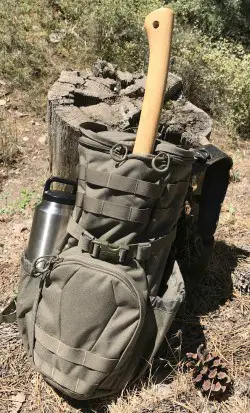 bag and got straps, then it’s good to go. The sad fact is that not only are backpacks unequal, but many are downright dangerous. As costs are cut, so are corners. But those cut corners don’t appear right away on the store shelf or online catalog. Instead those missing corners rear their ugly heads when needed the most. Straps tear. Hardware cracks. Seams rip. And zippers fail. Even the best packs can run afoul of Mother Nature, but a quality pack will fight to the end while a cheap pack already gave up the fight before ever leaving the store.
bag and got straps, then it’s good to go. The sad fact is that not only are backpacks unequal, but many are downright dangerous. As costs are cut, so are corners. But those cut corners don’t appear right away on the store shelf or online catalog. Instead those missing corners rear their ugly heads when needed the most. Straps tear. Hardware cracks. Seams rip. And zippers fail. Even the best packs can run afoul of Mother Nature, but a quality pack will fight to the end while a cheap pack already gave up the fight before ever leaving the store.




